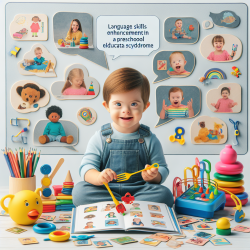Introduction
In the field of speech-language pathology, we often focus on individual interventions and personalized therapy plans. However, the environment in which children grow up can significantly influence their developmental outcomes. Drawing inspiration from a study on seniors in Barcelona, which explored how temperature and rain moderate the effect of neighborhood walkability on walking time, we can gain insights into how environmental factors might also impact children's development. This blog aims to encourage practitioners to consider these external factors and integrate them into their therapeutic approaches.
The Study: A Brief Overview
The study titled "Temperature and Rain Moderate the Effect of Neighborhood Walkability on Walking Time for Seniors in Barcelona" examined how environmental factors like walkability, temperature, and rain influence seniors' walking time. By using GPS and accelerometer data, the study found that neighborhood walkability positively correlates with walking time, while rain generally deters it. Additionally, the study highlighted that temperature and rain modify the effect of residential walkability on walking activity.
Applying the Findings to Children's Development
While the study focused on seniors, the findings can be extrapolated to children, particularly in understanding how environmental factors might affect their physical and cognitive development. Here are some ways practitioners can leverage these insights:
- Walkability and Physical Activity: Encourage schools and communities to improve neighborhood walkability. Safe and walkable environments can promote physical activity, which is crucial for children's motor development and overall health.
- Weather Considerations: Understand that weather conditions can impact children's outdoor activities. During adverse weather, provide alternative indoor activities that can stimulate both physical and cognitive development.
- Environmental Modifications: Advocate for urban planning that considers children's needs, such as safe pedestrian crossings, accessible parks, and recreational areas that are usable in various weather conditions.
Encouraging Further Research
While the study provides valuable insights, further research is needed to explore the specific impact of environmental factors on children's development. Practitioners are encouraged to participate in or initiate studies that investigate:
- The relationship between neighborhood walkability and children's language and social skills development.
- How different weather conditions affect children's engagement in therapeutic activities.
- The role of urban design in supporting inclusive environments for children with diverse needs.
Conclusion
By considering environmental factors, practitioners can enhance their therapeutic approaches and create more comprehensive plans that account for the broader context of a child's life. This holistic perspective not only improves individual outcomes but also contributes to healthier, more supportive communities.
To read the original research paper, please follow this link: Temperature and Rain Moderate the Effect of Neighborhood Walkability on Walking Time for Seniors in Barcelona.










